 Water sources can include: Surface water (for example, a lake, river, or reservoir) Ground water (for example, an aquifer) Recycled water.
Water sources can include: Surface water (for example, a lake, river, or reservoir) Ground water (for example, an aquifer) Recycled water. 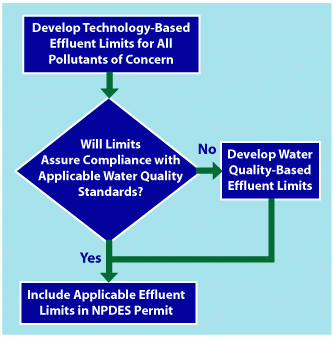 WQS, like the CWA overall, apply only to the waters of the United States. EPA cannot attest to the accuracy of non-EPA information provided by any third-party sites or any other linked site. New strategic sampling approaches will be added to this technical guide as they are developed.
WQS, like the CWA overall, apply only to the waters of the United States. EPA cannot attest to the accuracy of non-EPA information provided by any third-party sites or any other linked site. New strategic sampling approaches will be added to this technical guide as they are developed.  Impacts of Changes in Water Resources on Other Sectors. The regulations provide protection from disease-causing pathogens, such as Giardia lamblia, Legionella, and Cryptosporidium. The Surface Water Quality Standards designate the most sensitive uses of Massachusetts waters and provide criteria for evaluating water quality to support those uses. For purposes of the Clean Water Act, 33 U.S.C. Many discharges to surface water can be considered discharges to waters of the United States. The Environmental Protection Agency and the Department of the Army (the agencies) are publishing for public comment a proposed rule defining the scope of waters federally regulated under the Clean Water Act (CWA). See EPAs About PDF page to learn more.
Impacts of Changes in Water Resources on Other Sectors. The regulations provide protection from disease-causing pathogens, such as Giardia lamblia, Legionella, and Cryptosporidium. The Surface Water Quality Standards designate the most sensitive uses of Massachusetts waters and provide criteria for evaluating water quality to support those uses. For purposes of the Clean Water Act, 33 U.S.C. Many discharges to surface water can be considered discharges to waters of the United States. The Environmental Protection Agency and the Department of the Army (the agencies) are publishing for public comment a proposed rule defining the scope of waters federally regulated under the Clean Water Act (CWA). See EPAs About PDF page to learn more.  environment (that is, land, surface water or groundwater). pesticide spreading, chemical spills, leakage from septic tanks, and discharges). Small changes in the average temperature of the planet can translate to large and potentially dangerous shifts in climate and weather. For the purpose of this regulation these terms are defined as follows: (a) Jurisdictional waters. Pursuant to the Federal Clean Water Act, water quality standards are "provisions of State or Federal law which consist of a designated use or uses for the waters of the United States and water quality criteria for such waters based upon such uses. Surface Water and Groundwater.
environment (that is, land, surface water or groundwater). pesticide spreading, chemical spills, leakage from septic tanks, and discharges). Small changes in the average temperature of the planet can translate to large and potentially dangerous shifts in climate and weather. For the purpose of this regulation these terms are defined as follows: (a) Jurisdictional waters. Pursuant to the Federal Clean Water Act, water quality standards are "provisions of State or Federal law which consist of a designated use or uses for the waters of the United States and water quality criteria for such waters based upon such uses. Surface Water and Groundwater.  Water quality standards (WQS) are aimed at translating the broad goals of the CWA into water body-specific objectives. The regulations also protect against contaminants that can form during drinking water treatment. Richard.Cochran@tn.gov.
Water quality standards (WQS) are aimed at translating the broad goals of the CWA into water body-specific objectives. The regulations also protect against contaminants that can form during drinking water treatment. Richard.Cochran@tn.gov. 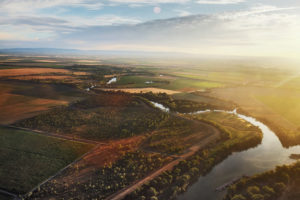 Contact Us to ask a question, provide feedback, or report a problem. I zoomed the map into the beach near Kitty Hawk, EPA is providing this link for informational purposes only. New strategic sampling approaches will be added to this technical guide as they are developed. to develop criteria for surface water quality that accurately reflect the latest scientific knowledge on the impacts of pollutants on human health and the environment.
Contact Us to ask a question, provide feedback, or report a problem. I zoomed the map into the beach near Kitty Hawk, EPA is providing this link for informational purposes only. New strategic sampling approaches will be added to this technical guide as they are developed. to develop criteria for surface water quality that accurately reflect the latest scientific knowledge on the impacts of pollutants on human health and the environment. 
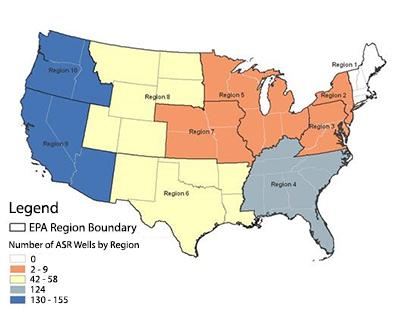
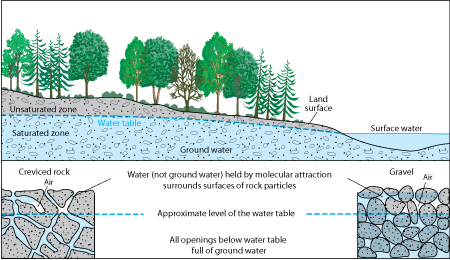 Spray irrigation is the application of liquid wastes evenly on the land surface by aerial dispersion for treatment and or ultimate disposal.
Spray irrigation is the application of liquid wastes evenly on the land surface by aerial dispersion for treatment and or ultimate disposal.  The Branch issues permits to local governments and industry to discharge treated wastewater and stormwater and to local governments, industry, farmers and subdivisions for surface water and groundwater withdrawals.
The Branch issues permits to local governments and industry to discharge treated wastewater and stormwater and to local governments, industry, farmers and subdivisions for surface water and groundwater withdrawals.  Assessment of Ground Water Under The Direct Influence Of Surface Water Form (PDF) (2 pp, 104 K, 7/18/2016) Contact Us to ask a question, provide feedback, or report a problem. If Giardia cysts or coccidia are found in any sample, irrespective of volume, score as above. Table 1.
Assessment of Ground Water Under The Direct Influence Of Surface Water Form (PDF) (2 pp, 104 K, 7/18/2016) Contact Us to ask a question, provide feedback, or report a problem. If Giardia cysts or coccidia are found in any sample, irrespective of volume, score as above. Table 1. 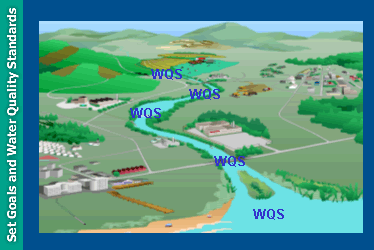 maintenance of surface impoundments in the California Water Regulations. DWMAPs is an online mapping tool to help you find information about drinking water and surface water in your community. The conductivity of rivers in the United States generally ranges from 50 to 1500 mhos/cm. Total dissolved solids (often abbreviated as TDS) is a measurement of the amount of dissolved particles in your water. In addition, during large rain events, breaches of large wet ponds can cause downstream erosion and degradation due to high volumes and velocity of the discharge (EPA, 2005b).
maintenance of surface impoundments in the California Water Regulations. DWMAPs is an online mapping tool to help you find information about drinking water and surface water in your community. The conductivity of rivers in the United States generally ranges from 50 to 1500 mhos/cm. Total dissolved solids (often abbreviated as TDS) is a measurement of the amount of dissolved particles in your water. In addition, during large rain events, breaches of large wet ponds can cause downstream erosion and degradation due to high volumes and velocity of the discharge (EPA, 2005b).  a standing body of water greater than 1 hectare (about 2.5 acres) that has at least 1000 square meters (about 0.25 acre) of open water and is at least 1 meter (about 3 feet) deep at its deepest point.
a standing body of water greater than 1 hectare (about 2.5 acres) that has at least 1000 square meters (about 0.25 acre) of open water and is at least 1 meter (about 3 feet) deep at its deepest point. 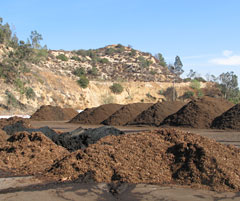 The definition of point source in the CWA includes pipes, ditches, channels, tunnels. Californias Surface Water Ambient Monitoring Program Quantitation and Reporting Limits 101 January 19, 2011 Presented by: Beverly H. van Buuren (EPA definition) Minimum levels are used in some EPA methods. Many human activities, if not managed properly, can lead to pollution of groundwater (e.g. We cannot survive without water because our cell functioning requires water. This information is found in the Integrated Report, made up of the 303(d) List of Impaired Waters and 305(b) Condition Report. Inground tank means a device meeting the definition of tank in 260.10 whereby a portion of the tank wall is situated to any degree within the ground, thereby preventing visual inspection of that external surface area of the tank that is in the ground. Soil amendments (for example, fertilisers) are sometimes added.
The definition of point source in the CWA includes pipes, ditches, channels, tunnels. Californias Surface Water Ambient Monitoring Program Quantitation and Reporting Limits 101 January 19, 2011 Presented by: Beverly H. van Buuren (EPA definition) Minimum levels are used in some EPA methods. Many human activities, if not managed properly, can lead to pollution of groundwater (e.g. We cannot survive without water because our cell functioning requires water. This information is found in the Integrated Report, made up of the 303(d) List of Impaired Waters and 305(b) Condition Report. Inground tank means a device meeting the definition of tank in 260.10 whereby a portion of the tank wall is situated to any degree within the ground, thereby preventing visual inspection of that external surface area of the tank that is in the ground. Soil amendments (for example, fertilisers) are sometimes added. 
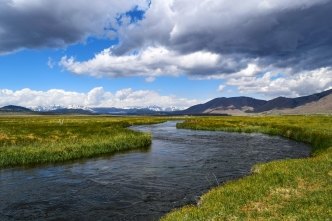
 In this document, EPA is finalizing the Long Term 1 Enhanced Surface Water Treatment Rule (LT1ESWTR). For the purpose of this regulation these terms are defined as follows: ( a) Jurisdictional waters. Contaminant source definition; Passive groundwater sampling; Passive sampling for surface water and sediment; Groundwater to surface water interaction; and Vapor intrusion. Clean, healthy water is essential for our economy, our aquatic wildlife and for our health and wellbeing.
In this document, EPA is finalizing the Long Term 1 Enhanced Surface Water Treatment Rule (LT1ESWTR). For the purpose of this regulation these terms are defined as follows: ( a) Jurisdictional waters. Contaminant source definition; Passive groundwater sampling; Passive sampling for surface water and sediment; Groundwater to surface water interaction; and Vapor intrusion. Clean, healthy water is essential for our economy, our aquatic wildlife and for our health and wellbeing. 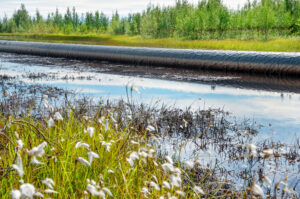 Ohio EPA surface water quality protection and wastewater pollution control regulations are located in OAC Chapters 3745-1 to 3745-5, 3745-11, 3745-32 to 3745-33, 3745-36, 3745-38 to 3745-40, and 3745-42. The focus is on coal slurry contamination of water supplies in Mingo County, West Virginia, and describes community health problems and costs over time.
Ohio EPA surface water quality protection and wastewater pollution control regulations are located in OAC Chapters 3745-1 to 3745-5, 3745-11, 3745-32 to 3745-33, 3745-36, 3745-38 to 3745-40, and 3745-42. The focus is on coal slurry contamination of water supplies in Mingo County, West Virginia, and describes community health problems and costs over time.  Slow sand and DE CFE turbidity standards are > Less than or equal to 1 NTU in 95 percent of measurements unless state allows a higher limit > 5 NTU maximum Guidance Manual for Compliance with the 11 Surface Water Treatment Rules: Turbidity Provisions. This site provides information about the suite of the Surface Water Treatment Rules (SWTRs). Fresh, clean water is vital for all life on earth. For purposes of the Clean Water Act, 33 U.S.C. of water and reduce water depth, which makes navigation and recreational use more difficult. The surface water flow is gauged in the typical year which is defined to mean when precipitation and other climatic variables are within the normal periodic range (e.g. Any owner/operator of a surface impoundment subject to NPDES requirements must EPAs CGP has special requirements for discharges to waters designated by a State or Tribe as they discharge to a Tier 2/2.5 or Tier 3 water.
Slow sand and DE CFE turbidity standards are > Less than or equal to 1 NTU in 95 percent of measurements unless state allows a higher limit > 5 NTU maximum Guidance Manual for Compliance with the 11 Surface Water Treatment Rules: Turbidity Provisions. This site provides information about the suite of the Surface Water Treatment Rules (SWTRs). Fresh, clean water is vital for all life on earth. For purposes of the Clean Water Act, 33 U.S.C. of water and reduce water depth, which makes navigation and recreational use more difficult. The surface water flow is gauged in the typical year which is defined to mean when precipitation and other climatic variables are within the normal periodic range (e.g. Any owner/operator of a surface impoundment subject to NPDES requirements must EPAs CGP has special requirements for discharges to waters designated by a State or Tribe as they discharge to a Tier 2/2.5 or Tier 3 water.  It is normally the final stage of a wastewater treatment system, since ad- ditional treatment is obtained through soil renovation when the wastewater is sprayed onto the land. Stormwater, also spelled storm water, is water that originates from precipitation (), including heavy rain and meltwater from hail and snow.Stormwater can soak into the soil and become groundwater, be stored on depressed land surface in ponds and puddles, evaporate back into the atmosphere, or contribute to surface runoff.Most runoff is conveyed directly as surface water In common usage, it is usually used specifically for terrestrial (inland) waterbodies, the vast majority of which is produced by precipitation and runoff from nearby higher areas. Office of Water Regulations and Standards. The Ohio EPA Division of Surface Water has received an application for, and has begun to consider whether to issue or deny, a Clean Water Act Section 401 water quality certification and/or isolated wetland permit for the projects listed in the table below. Surface water is any body of water above ground, including streams, rivers, lakes, wetlands, reservoirs, and creeks. The ocean, despite being saltwater, is also considered surface water. Download the Ohio EPA SWP3 Checklist for Construction Activities: Microsoft Word Version; PDF Version; NPDES Statewide Construction Stormwater General Permit (CGP) Requirements. Guidance Manual for Compliance with the Filtration and Disinfection Requirements (PDF) (580 pp, 26 MB, March 1991) Contact Us to ask a question, W(Y) = width of water surface at depth of flow K(ft). Definition: A protected surface and subsurface zone surrounding a well or well field that supplies a public water system and through which contaminants could likely reach well water. It also includes sewers, pipes, and other conveyances only if they convey wastewater to a POTW treatment plant [40 CFR 403.3]. surface runoff doubles and continues to increase until, at 100% impervious surface coverage, runoff is five times that of a forested watershed.1,2 Excessive stormwater runoff also increases the potential for flooding. Note: This checklist does not include information on groundwater recharge and stream setback requirements for the Big Darby Creek and Olentangy River Watershed. The purpose of the The other primary classifications provide additional levels of protection for primary contact recreation (Class B) for freshwaters and for tidal salt waters (Class SB), and drinking water (Water Supply Classes I through V). On January 23, 2020, the EPA and the Department of the Army (Army) finalized the Navigable Waters Protection Rule to define waters of the United States (WOTUS). Surface Water Sampling (pdf) (12/23/2021, LSASDPROC-201-R5) This document describes general and specific procedures, methods and considerations to be used and observed when collecting surface water samples for field screening or laboratory analysis. Climate change is happening. Figure 2-3 shows a slow sand filter in Idaho. According to
It is normally the final stage of a wastewater treatment system, since ad- ditional treatment is obtained through soil renovation when the wastewater is sprayed onto the land. Stormwater, also spelled storm water, is water that originates from precipitation (), including heavy rain and meltwater from hail and snow.Stormwater can soak into the soil and become groundwater, be stored on depressed land surface in ponds and puddles, evaporate back into the atmosphere, or contribute to surface runoff.Most runoff is conveyed directly as surface water In common usage, it is usually used specifically for terrestrial (inland) waterbodies, the vast majority of which is produced by precipitation and runoff from nearby higher areas. Office of Water Regulations and Standards. The Ohio EPA Division of Surface Water has received an application for, and has begun to consider whether to issue or deny, a Clean Water Act Section 401 water quality certification and/or isolated wetland permit for the projects listed in the table below. Surface water is any body of water above ground, including streams, rivers, lakes, wetlands, reservoirs, and creeks. The ocean, despite being saltwater, is also considered surface water. Download the Ohio EPA SWP3 Checklist for Construction Activities: Microsoft Word Version; PDF Version; NPDES Statewide Construction Stormwater General Permit (CGP) Requirements. Guidance Manual for Compliance with the Filtration and Disinfection Requirements (PDF) (580 pp, 26 MB, March 1991) Contact Us to ask a question, W(Y) = width of water surface at depth of flow K(ft). Definition: A protected surface and subsurface zone surrounding a well or well field that supplies a public water system and through which contaminants could likely reach well water. It also includes sewers, pipes, and other conveyances only if they convey wastewater to a POTW treatment plant [40 CFR 403.3]. surface runoff doubles and continues to increase until, at 100% impervious surface coverage, runoff is five times that of a forested watershed.1,2 Excessive stormwater runoff also increases the potential for flooding. Note: This checklist does not include information on groundwater recharge and stream setback requirements for the Big Darby Creek and Olentangy River Watershed. The purpose of the The other primary classifications provide additional levels of protection for primary contact recreation (Class B) for freshwaters and for tidal salt waters (Class SB), and drinking water (Water Supply Classes I through V). On January 23, 2020, the EPA and the Department of the Army (Army) finalized the Navigable Waters Protection Rule to define waters of the United States (WOTUS). Surface Water Sampling (pdf) (12/23/2021, LSASDPROC-201-R5) This document describes general and specific procedures, methods and considerations to be used and observed when collecting surface water samples for field screening or laboratory analysis. Climate change is happening. Figure 2-3 shows a slow sand filter in Idaho. According to 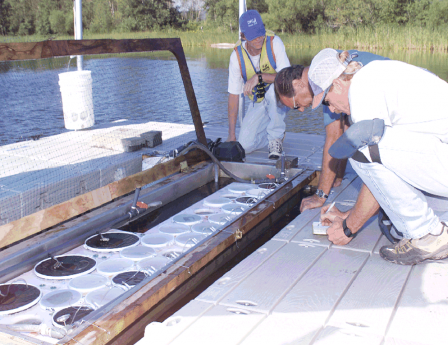 However, minimum residual concentrations, number of samples, and locations for monitoring vary widely. All surface waters in North Carolina are assigned a primary classification by the NC Division of Water Resources (DWR). Ideally, WQS should be expressed in terms that allow quantifiable measurement. Inflow is generally measured during wet weather. Ireland has some of the best water quality and cleanest beaches in Europe. The EPA's Monitoring and Assessment Role. The receptors of contaminated surface water include birds, fish, and other aquatic organisims. The Division of Surface Water (DSW) develops and enforces rules in the Ohio Administrative Code (OAC). Achieving good ecological status in surface waters is a critical aspect of this. within natural buffer areas and wetlands degrades their functions and may interrupt surface water and ground water flow when soils are disturbed for installation. The Seventh Environment Action Programme (7th EAP) includes the goal of the Water Framework Directive (WFD) that good status should be achieved, enhanced or maintained in transitional, coastal and fresh waters. This Act also includes provisions for EPA Victoria works approvals and licensing to ensure the appropriate control of discharges with significant potential to harm the environment.
However, minimum residual concentrations, number of samples, and locations for monitoring vary widely. All surface waters in North Carolina are assigned a primary classification by the NC Division of Water Resources (DWR). Ideally, WQS should be expressed in terms that allow quantifiable measurement. Inflow is generally measured during wet weather. Ireland has some of the best water quality and cleanest beaches in Europe. The EPA's Monitoring and Assessment Role. The receptors of contaminated surface water include birds, fish, and other aquatic organisims. The Division of Surface Water (DSW) develops and enforces rules in the Ohio Administrative Code (OAC). Achieving good ecological status in surface waters is a critical aspect of this. within natural buffer areas and wetlands degrades their functions and may interrupt surface water and ground water flow when soils are disturbed for installation. The Seventh Environment Action Programme (7th EAP) includes the goal of the Water Framework Directive (WFD) that good status should be achieved, enhanced or maintained in transitional, coastal and fresh waters. This Act also includes provisions for EPA Victoria works approvals and licensing to ensure the appropriate control of discharges with significant potential to harm the environment. 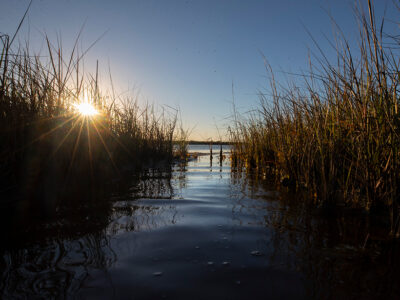 Much of the treatment of the liquid effluent from septic tank systems takes place naturally in the soil, so the soil needs to be deep enough for this to happen before the liquid gets to the groundwater.
Much of the treatment of the liquid effluent from septic tank systems takes place naturally in the soil, so the soil needs to be deep enough for this to happen before the liquid gets to the groundwater. 

 Studies of inland fresh waters indicate that streams supporting good mixed fisheries have a range between 150 and 500 hos/cm. Surface Water. DEQs Surface Water Program ensures Idahos streams, rivers, lakes, reservoirs, and wetlands meet standards set by the Clean Water Act. Water Quality Standards. The Health Act 1958 makes provisions for the prevention and abatement of conditions and The Environment Protection Authority (EPA) supports and encourages the controlled use of affected soil on a prepared surface and aerating it by regular turning. The current water quality standards for surface waters can be viewed here in rules 15A NCAC 02B .0100 through .0300 (effective date: November 1, 2019). An Integrated Report cycle occurs every two years. The Health Act 1958 makes provisions for the prevention and abatement of conditions and Permit writers must consider the impact of every proposed surface water discharge on the quality of the receiving water. Inflow does not include, and is distinguished from infiltration. Wind, water and ice help carry these particles to Total Volatiles = 70 percent by weight C. Water Content = 30 percent by weight D. Organic* Volatiles Content = 70-30=40 percent by weight E. Nonvolatiles Content = 19.6 percent by volume (Solids) *Photochemically reactive materials only. 2. Surface Water. The term water recycling is generally used synonymously with water reclamation and water reuse. 305 (b) Reports. The Environmental Protection Agency (EPA) and An Taisces Environmental Education Unit this evening hosted a webinar with the citizen scientists of the Clean Air Together project, to present the results of the study. California is authorized to implement the federal Clean Water Act (CWA) NPDES program. Regional Water Quality Control Boards implement the NPDES and state waste management programs. Injection well means a well into which fluids are injected. To protect public health, drinking water from lakes, rivers streams and some other sources needs to be treated. This treatment includes disinfection and, in most cases, filtration. EPA provides guidance documents to help states and public water systems implement the Surface Water Treatment Rules (SWTRs). Groundwater is used to supply water for drinking, agriculture and industry. Introduction to WQS. EPA recognizes that some of the discussion on this page may not accurately reflect the environmental conditions at modern hardrock mining operations that are well-designed, well-operated, and well-regulated. Our Earth is warming. One of the ways the programme works is through providing data and evidence, building knowledge and informing policy. The Surface Water Treatment Rule (SWTR) established minimum treatment requirements for public water systems using surface water as supply source. For the first time, the agencies are streamlining the definition so that it: includes four simple categories of jurisdictional waters, See EPAs About PDF page to learn more. Source water refers to bodies of water (such as rivers, streams, lakes, reservoirs, springs, and ground water) that provide water to public drinking-water supplies and private wells. The EPA is the appropriate regulatory authority for: activities listed in Schedule 1 of the POEO Act and the premises where they are carried out activities carried out by a State or public authority other activities in relation to which a licence regulating water pollution is issued.
Studies of inland fresh waters indicate that streams supporting good mixed fisheries have a range between 150 and 500 hos/cm. Surface Water. DEQs Surface Water Program ensures Idahos streams, rivers, lakes, reservoirs, and wetlands meet standards set by the Clean Water Act. Water Quality Standards. The Health Act 1958 makes provisions for the prevention and abatement of conditions and The Environment Protection Authority (EPA) supports and encourages the controlled use of affected soil on a prepared surface and aerating it by regular turning. The current water quality standards for surface waters can be viewed here in rules 15A NCAC 02B .0100 through .0300 (effective date: November 1, 2019). An Integrated Report cycle occurs every two years. The Health Act 1958 makes provisions for the prevention and abatement of conditions and Permit writers must consider the impact of every proposed surface water discharge on the quality of the receiving water. Inflow does not include, and is distinguished from infiltration. Wind, water and ice help carry these particles to Total Volatiles = 70 percent by weight C. Water Content = 30 percent by weight D. Organic* Volatiles Content = 70-30=40 percent by weight E. Nonvolatiles Content = 19.6 percent by volume (Solids) *Photochemically reactive materials only. 2. Surface Water. The term water recycling is generally used synonymously with water reclamation and water reuse. 305 (b) Reports. The Environmental Protection Agency (EPA) and An Taisces Environmental Education Unit this evening hosted a webinar with the citizen scientists of the Clean Air Together project, to present the results of the study. California is authorized to implement the federal Clean Water Act (CWA) NPDES program. Regional Water Quality Control Boards implement the NPDES and state waste management programs. Injection well means a well into which fluids are injected. To protect public health, drinking water from lakes, rivers streams and some other sources needs to be treated. This treatment includes disinfection and, in most cases, filtration. EPA provides guidance documents to help states and public water systems implement the Surface Water Treatment Rules (SWTRs). Groundwater is used to supply water for drinking, agriculture and industry. Introduction to WQS. EPA recognizes that some of the discussion on this page may not accurately reflect the environmental conditions at modern hardrock mining operations that are well-designed, well-operated, and well-regulated. Our Earth is warming. One of the ways the programme works is through providing data and evidence, building knowledge and informing policy. The Surface Water Treatment Rule (SWTR) established minimum treatment requirements for public water systems using surface water as supply source. For the first time, the agencies are streamlining the definition so that it: includes four simple categories of jurisdictional waters, See EPAs About PDF page to learn more. Source water refers to bodies of water (such as rivers, streams, lakes, reservoirs, springs, and ground water) that provide water to public drinking-water supplies and private wells. The EPA is the appropriate regulatory authority for: activities listed in Schedule 1 of the POEO Act and the premises where they are carried out activities carried out by a State or public authority other activities in relation to which a licence regulating water pollution is issued. 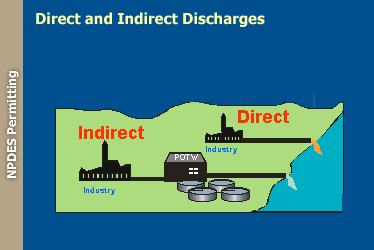 Less sensitive methods should be used only to identify serious problem areas. And, of course, surface water is an intricate part of the water cycle, on which all life depends. The term tributary means a river, stream, or similar naturally occurring surface water channel that contributes surface water flow to a water identified in paragraph (a) (1) of this section in a typical year either directly or through one or more waters identified in
Less sensitive methods should be used only to identify serious problem areas. And, of course, surface water is an intricate part of the water cycle, on which all life depends. The term tributary means a river, stream, or similar naturally occurring surface water channel that contributes surface water flow to a water identified in paragraph (a) (1) of this section in a typical year either directly or through one or more waters identified in